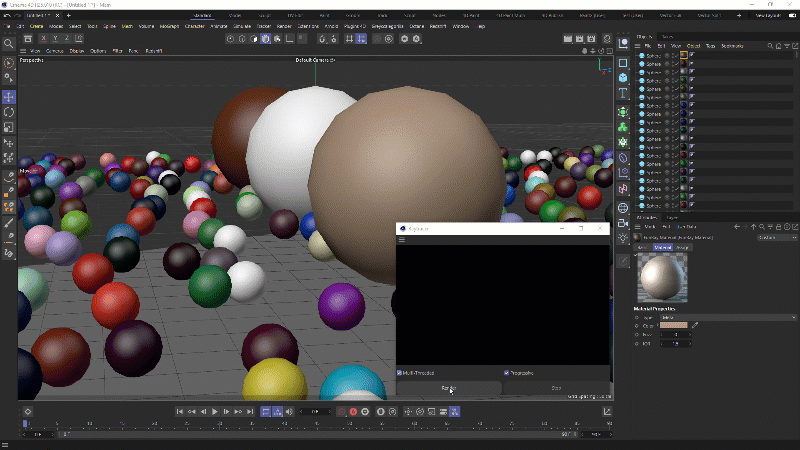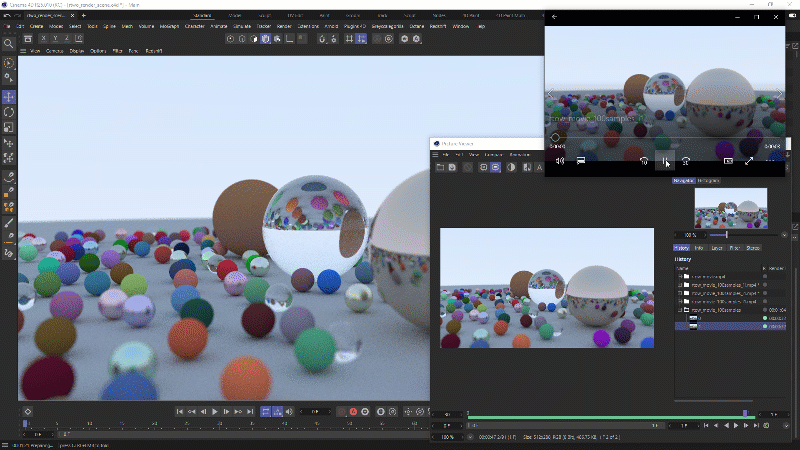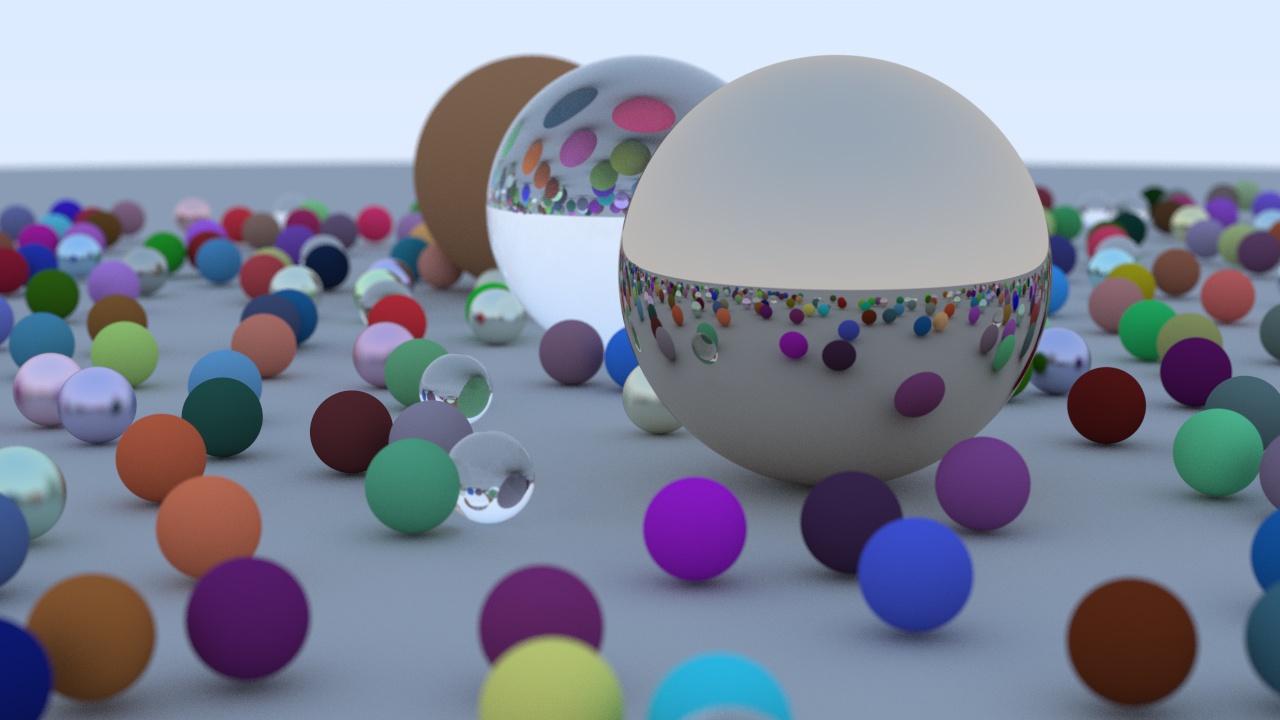FunRay Renderer
An integration of Peter Shirleys Ray Tracing In One Weekend book series into Cinema 4D.
Current raytracing code is based on the first book. There have been no changes to any of the raytracing code at all.
This is not optimized. It is slow. It is just a fun side project to integrate a renderer into C4D.
Full plugin source code available here
Compatible with R25 and S26 on Windows and macOS
Currently supports the following
- Supports Spheres, Cubes and Cylinders that are individual objects in the scene.
-
Custom Materials (Material Manager->Create->Extensions->FunRay Material)
- Metal
- Glass
- Lambert
-
Supported Camera Parameters
-
Object Tab
- Focal Length
- Sensor Size
- Field of View (Horizontal)
- Field of View (Vertical)
- Focus Distance
- Use Target Object
- Focus Object
-
Physical Tab
- F-Stop
-
Object Tab
-
Interactive Renderer View (Extensions->FunRay->FunRay RenderView)
- Interactive Preview
- Supports moving and adjusting camera parameters
- Supports editor camera and selected camera
- Supports moving objects
-
Different Render modes
- Multi-Threaded: When enabled uses all your cores. When disabled uses a single core.
- Progressive: When enabled will continuously update. When disabled it will use the number of Samples as defined in the "RenderSettings->FunRay Renderer->Samples Per Pixel"
-
Render Settings dropdown to select the FunRay Renderer
- Samples Per Pixel: Number of samples per pixel when rendering to Picture Viewer or to File
- Max Depth
- Viewport Render Mode: Set what kind of rendering to do in the main C4D viewport, default is multi-threaded progressive

Workflow
- From Extensions select FunRay->Test Scene 1
- From Extensions select FunRay->RenderView
- In the RenderView press the 'Render' button
- Rotate the camera, change camera settings or move objects in your scene and the view will update
This picture shows rendering to the viewport and the picture viewer. The spinning movie was renderered directly out of Cinema 4D as an mp4 file. It is not real time.

This 1280x720 image took 12 minutes to render. F-Stop of 0.8, 400 samples per pixel and Max Depth of 50. Rendered on a 10 core i7.
